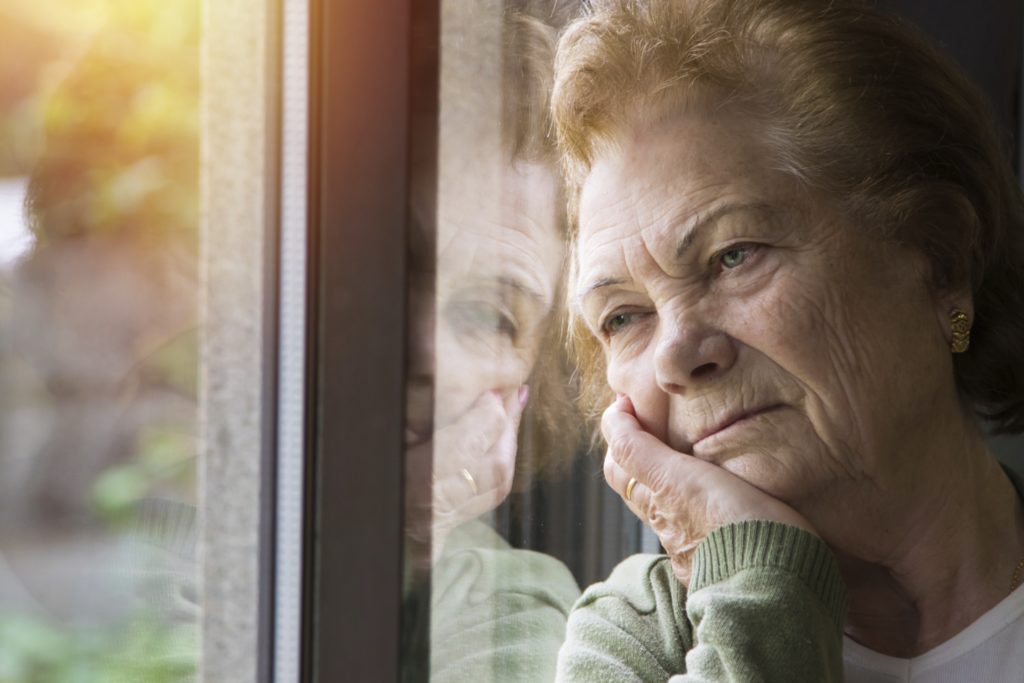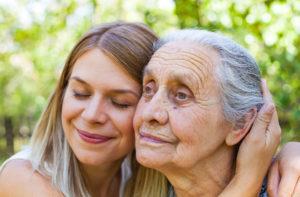August 23, 2021

Daylight savings time began this month, allowing most of the United States and other parts of the world one more merciful hour of sunlight each day. This is good news for all of us after a long, dark winter amidst a pandemic. It’s especially bright for those struggling with Sundowner Syndrome, a multifaceted side effect of Alzheimer’s disease and other kinds of dementia. Sundowning, also known as “late-day confusion,” can cause a whole host of issues and behaviors among those with dementia, including bewilderment, wandering, agitation, anxiety, aggression, depression, anger, fear, paranoia, violence, hallucinations, emotional outbursts, the inability or refusal to follow directions, “shadowing” caregivers, and more. Not surprisingly, it’s also difficult for caregivers of those experiencing this late afternoon and evening phenomenon.
But there is light at the end of the tunnel, so to speak, in coping with Sundowner Syndrome.
What Causes Sundowner Syndrome?
Understanding what’s behind Sundowners goes a long way toward effectively dealing with it. Experts pose different theories as to why it happens, but most agree that the onset of symptoms and the fading day are indeed correlated. Here are some leading reasons for Sundowners Syndrome proposed by doctors and researchers.
- Disturbances in a person’s circadian rhythms, or sleep-wake cycles
- Nighttime fatigue from too much dozing or under-stimulation during the day
- Anxiety and disorientation caused by diminished ability to see or perceive objects in the dark
- Unmet needs causing hunger, thirst, boredom, pain, lack of socialization, depression
- Large meals, strong foods, caffeine or alcohol late in the afternoon or evening
- Over-stimulation due to the accumulation of sensory stimulation throughout the course of the day
How Can You Help Someone Who is Sundowning?
Just as there are several suspected reasons for Sundowners Syndrome, there are many ways to diminish or mitigate the symptoms, depending on the patterns and behaviors you observe in a loved one.
Notice patterns and triggers
Be aware of sundowning triggers unique to your loved one. Keep a journal or use an app to help you track and recognize which particular situations or stimuli provoke or worsen sundowning symptoms. Once these are identified, they can be more easily avoided.
Utilize light therapy
Among the theories about what causes Sundowners, changes in circadian rhythms – the 24-hour cycles that are part of the body’s internal clock – seems to be the prevailing one. As light is one of the strongest agents in regulating the sleep-wake cycle, studies suggest that light therapy from a full-spectrum fluorescent light placed about three feet from your loved one, preferably in the morning hours, helps reduce the agitation associated with mood or behavioral changes when the sun goes down. Exposure to natural sunlight during the day is equally beneficial and also provides older adults much needed Vitamin D. A nightlight is useful in familiarizing your loved one with surroundings that may be frightening in complete darkness. Also, it may be helpful to draw the blinds or curtains so that they cannot see the sky turn from light to dark.
Maintain schedules and routines
People with Alzheimer’s or dementia are particularly sensitive to changes in their daily routines. Learning and remembering new things can be extremely stressful, so it’s important to stick to regular schedules and routines in caring for someone prone to sundowning.
Provide regular daytime activity
Inactivity and dozing during the day inhibit sleep at bedtime and disrupt the healthy circadian rhythms that keep sundowning at bay. Light exercise and simple, low-stress daytime activities facilitate sleep at the right times.
Ensure comfort, familiarity and security
For those with dementia, the world can feel like a frightening, dangerous place. Providing a setting that is safe and secure (especially for those prone to wandering), reassuringly familiar, and comfortable with little variances in where things are, how things look, lessens the agitation and fear associated with sundowning.
Maintain peace and calm
Help your senior feel relaxed by creating an environment of tranquility, especially in the hour or so before bedtime. Take a pass on TV shows, books or games and opt for soothing music or browse a favorite photo album together…whatever brings positive feelings and calm to your loved one.
Optimal diet and eating times
Many foods and beverages can disrupt sleep, and when your loved one eats is as important as what they eat. Avoid large meals in the late afternoon or evening, and make sure they abstain from caffeine or alcohol at least six hours before bed. Avoid spicy, fatty or sugary foods or anything upsetting to the digestive tract.
Consult a doctor for sundowning
Sleep problems play a huge role in sundowning, and sometimes people need prescription medications ordered by a qualified medical professional who knows their health history and current condition. NEVER administer over-the-counter sleep aids or products to your loved one without the advice of a doctor! Doing so could make sundowning and other issues far worse for him or her.
Practice patience, patience, patience
Above all, be patient and loving with your senior struggling with Sundowner Syndrome. Don’t argue with them, react to their behavior, or even apply logic, as this could likely further frustrate and confuse them. Rather, meet them in their version of reality, assure them of their safety, and validate their feelings, however irrational they may seem. The sense of comfort and calm you convey is key to preserving peace when the sun goes down.
Memory Care at Barclay Friends
Our qualified memory care staff is well-trained in the best of care for those with dementia and Alzheimer’s and associated sundowning symptoms.
What’s more, Barclay Friends communities, particularly our new interconnected Preston and Cotter, allow generous natural sunlight into all areas, from dining, fitness and gathering spaces to individual living suites. Banks of beautiful windows invite the healing warmth and light of the sun inside, and multiple gardens and outside areas let residents soak up the sunshine in the great outdoors as well.
The Sun is Up!
Cotter and Preston are open and accepting applications. Welcome the dawn of a new day for yourself or a loved one.
